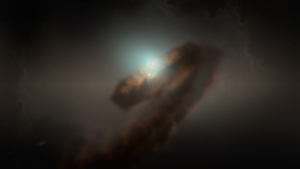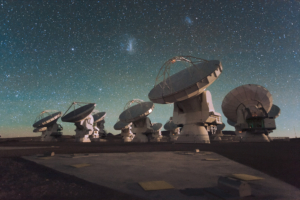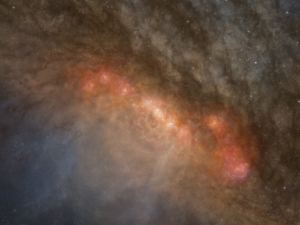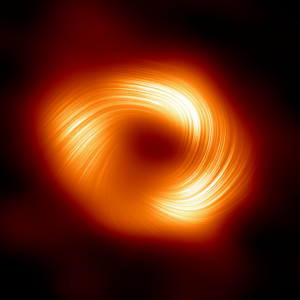An unusual group of stars in the Orion constellation have revealed their secrets. FU Orionis, a double star system, first caught astronomers’ attention in 1936 when the central star suddenly became 1,000 times brighter than usual. This behavior, expected from dying stars, had never been seen in a young star like FU Orionis. The strange phenomenon inspired a new classification of stars sharing the same name (FUor stars). FUor stars flare suddenly, erupting in brightness, before dimming again many years later. It is now understood that this brightening is due to the stars taking in energy from their surroundings via gravitational accretion, the main force that shapes stars and planets. However, how and why this happens remained a mystery—until now, thanks to astronomers using the Atacama Large Millimeter/submillimeter Array (ALMA).
Protecting ALMA’s Skies
The Atacama Large Millimeter/submillimeter Array (ALMA), renowned for observing the cosmos’s darkest and most distant corners, has taken a…
ALMA Reveals Jupiter’s Moon Io has been Volcanically Active for Billions of Years
Jupiter’s moon Io is the most volcanically active place in the solar system. During its 1.8-day orbit, this moon…
Associated Universities, Inc. and the National Radio Astronomy Observatory celebrate success of Chilean students in pursuit of STEM careers
The U.S. National Science Foundation National Radio Astronomy Observatory (NSF NRAO) and Associated Universities, Inc. (AUI) are proud to celebrate the remarkable achievements of two local students, Iris and Camila, as they embark on their journeys into STEM (Science, Technology, Engineering, and Mathematics) careers.
Stellar Explosions and Cosmic Chemistry
Astronomers have discovered the secrets of a starburst galaxy producing new stars at a rate much faster than our…
Astronomers Unveil Strong Magnetic Fields Spiraling at the Edge of Milky Way’s Central Black Hole
The Event Horizon Telescope (EHT) collaboration has observed spirals of light escaping from the edge of the supermassive black…







